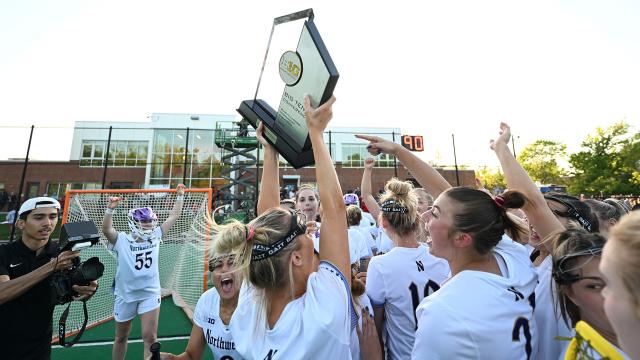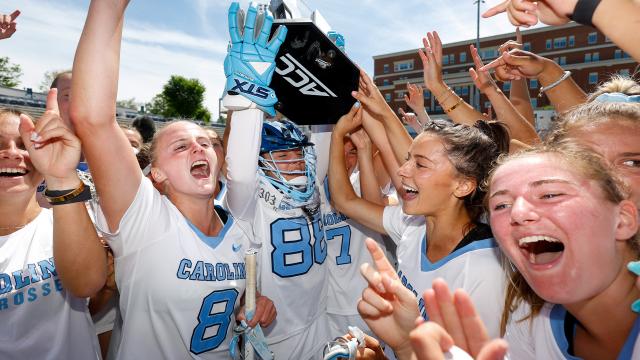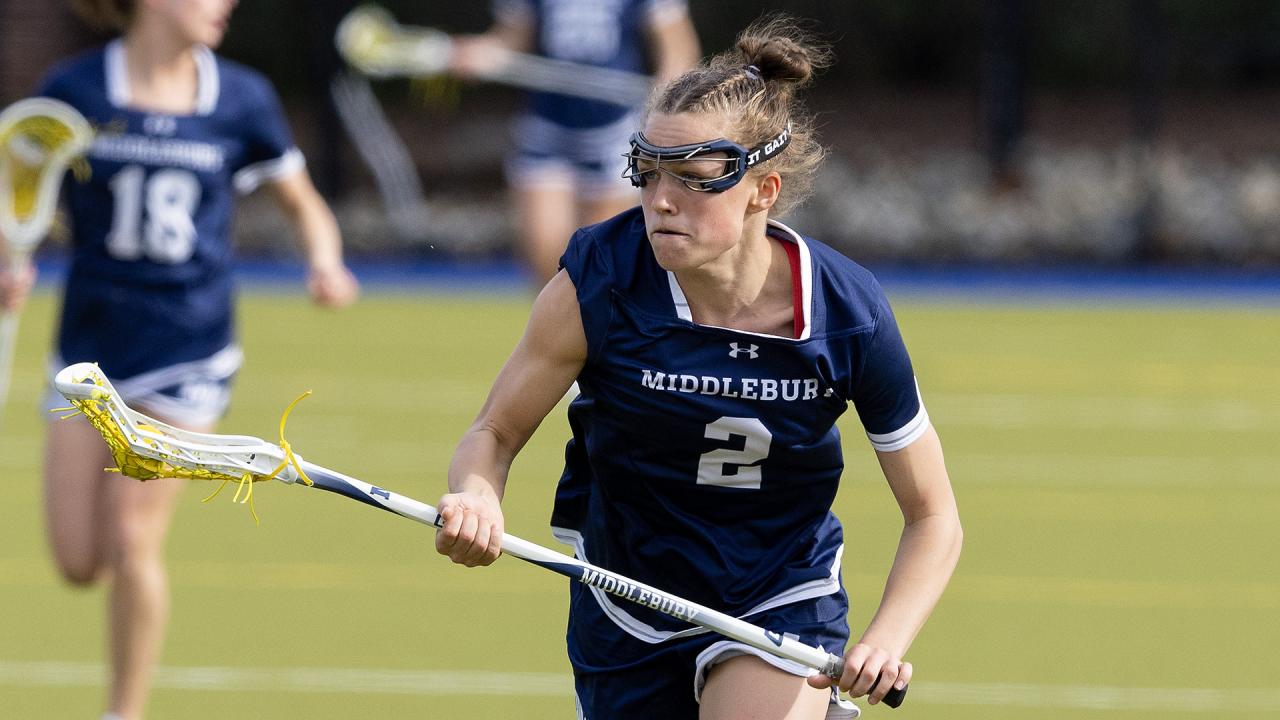
Once Reluctant to Play D-III, 'A Million Reasons' Why Hope Shue Wouldn't Change a Thing
Hope Shue was deemed too small for Division I lacrosse. It’s a common refrain for those possessing somewhere in the ballpark of her 5-4 frame.
Division I, though, was all she wanted. Playing for the prestigious Mass Elite club team, Shue was surrounded by high-level Division I prospects.
“I was always small, and I knew that, but because I was on a very elite team and going to all the camps and clinics, I had it in my head that that was my path,” Shue said. “As a young person, the dream is that you get recruited by one of these schools, and that’s kind of why I was doing it — to get an offer from a Stanford or a Harvard.”
Those offers never came. On September 1, a few Division I schools touched base. They weren’t academically challenging enough to pique Shue’s interest. Her father played soccer at Harvard. Her brother and sister both went to Ivy League schools.
Shue was devastated.
“That was all I ever wanted at the time,” she said. “I was struggling with the idea of playing lacrosse in college at all.”
Then Middlebury came calling. A private liberal arts college in Vermont, Middlebury boasts a microscopic acceptance rate of 10 percent, according to U.S. News & World Report, and is one of the best Division III women’s lacrosse programs ever.
But that was the problem. Division III.
“It was almost a coin-flip decision,” Shue said. “I knew how great Middlebury was, but I had never been to the school. I remember when I called [head coach Kate Livesay] to commit, I remember hanging up and not having a feeling of joy. I really kept grappling with it.”
Middlebury and its NESCAC counterparts are known as the “Little Ivies,” with selective admissions, high standards of academic excellence and historic prestige. It’s not Division I, but Shue has found it to be just as good — if not better.
“Now I want to shake myself,” Shue said. “It’s been the most unbelievable four years. What I’m describing is the experience of so many Division III lacrosse players. It’s a breeding ground, the NESCAC specifically, of similar stories.”
Shue has done nothing but pile up wins and accolades at Middlebury. The Panthers are 74-1 since she stepped foot on campus in 2022. That includes three NCAA championships. Shue was the 2024 IWLCA National Player of the Year, the 2025 USA Lacrosse Division III Women’s Preseason Player of the Year and a two-time NCAA Elite 90 Award winner, which honors the student-athlete with the highest GPA among athletes at the participating site of the finals of each of the NCAA’s 90 championships.
She has a 4.00 GPA as a neuroscience major, studying the nervous system and the brain while also figuring out ways to get inside her own head.
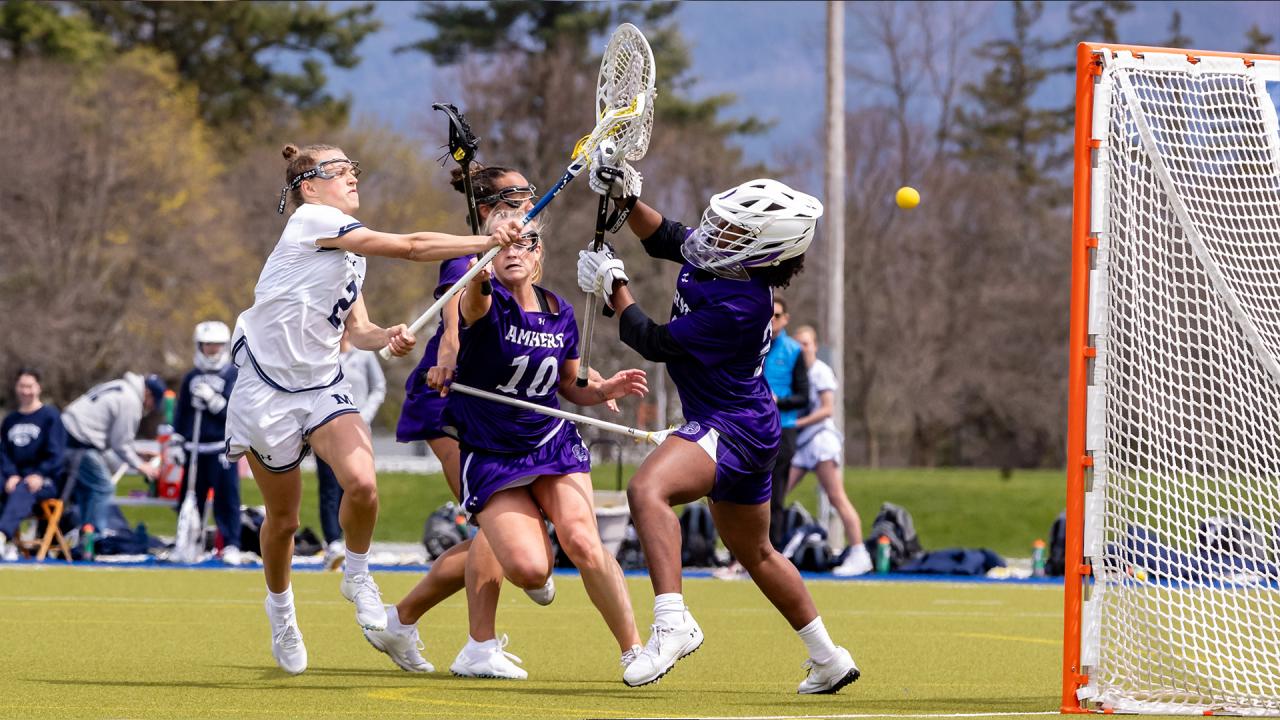
You see, Shue makes it a habit of underestimating herself. It’s impossible to have an ego while also outworking her peers and setting a standard in practice, she said.
“It could be a confidence thing, but I don’t think it’s that,” Shue said. “I like to build an underdog mentality for myself. That’s pretty core to my persona. I never want to be complacent.”
Livesay would agree. When all you do is win, it’s imperative to create ways to stay motivated.
“She convinces herself that we are not as good as the teams we are playing, and if she doesn’t bring maximum effort, she’s going to be in a tough place,” Livesay said. “It’s super helpful from a leadership perspective because that is the ultimate fear as a program that’s had consistent success. Players start to expect it and think it’ll just happen. That’s why a player like Hope is so valuable.”
That’s not to dismiss her value on the attacking end, where Shue will finish her Middlebury career as the program’s all-time leading goal scorer (257 and counting). She’s within striking distance of Middlebury’s points record of 347, which Amy DiAdamo set from 1994-97. Shue has 322 with five more regular-season games to go, plus the postseason.
Not bad for an “undersized” player who didn’t want anything to do with offense in college.
“I was really trying to get recruited as a defensive midfielder,” Shue said. “It took a bit for my coaches to unlock that confidence in me as a dodger.”
Livesay noticed that dodging ability on Shue’s literal first day of practice as a freshman. Shue plays the game like a defensive midfielder in that statistics are meaningless to her. Yes, she’s piled up plenty of counting stats, but those are just a product of her role and what she’s been asked to do for the Panthers.
“Uniquely, she does not get wrapped up in the baggage of statistics, expectations,” Livesay said. “She’s quite mature in that respect. She has said to me, ‘I don’t need to score as many goals as I did last year. I just want to help us win.’”
Every season, Shue still asks if she can shift back to the midfield. She doesn’t like feeling bound by a restraining line.
There isn’t much else that can hold Shue back. She’s a feisty competitor, and some might even call her a perfectionist. She and her father, Todd, used to work tirelessly to one-up their consecutive successful headers record with a soccer ball. When Shue was 14, they reached 550 passes.
Living by the “practice makes perfect” credo, Shue loves reps. The metronome-like sound of a ball hitting a wall made her days as a youth athlete fly by.
“I’d hit the soccer ball at my garage door inside my mud room for like five hours until my parents made me stop,” she said.
Shue has a job lined up at a small biotech financial advisory firm in Boston after she graduates in May. The thought of trying her hand at Division I, to taste the highest level she once craved, never tempted her. Not after everything that’s happened at Middlebury.
“That never crossed my mind. There are a million reasons why not,” Shue said. “First of all, I would never want to leave my team. I would have zero interest in that, ever. I would love a hypothetical season to see what I could do, but that would never outweigh my desire to be with my team.”
It’s somewhat ironic considering how this journey began, how Shue almost begrudgingly became a Division III athlete. But like how she attacks everything else, Shue put in the work to end on top.
“She’s someone who wants to get it right,” Livesay said. “She shows up to do the extra reps, get in wall ball, work really hard in the weight room. She’s someone who’s thinking, ‘If I’m going to invest this time, I want to get the most out of it.’”
Kenny DeJohn
Kenny DeJohn has been the Digital Content Editor at USA Lacrosse since 2019. First introduced to lacrosse in 2016 as a Newsday Sports reporter on Long Island (yes, ON Long Island), DeJohn specializes in women's game coverage. His search for New York quality pizza in Baltimore is ongoing.
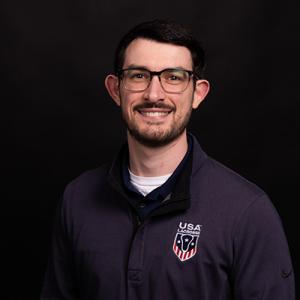
Related Articles

